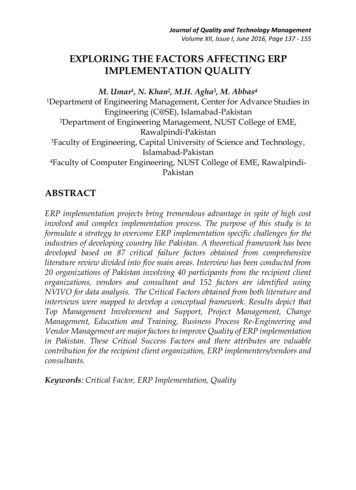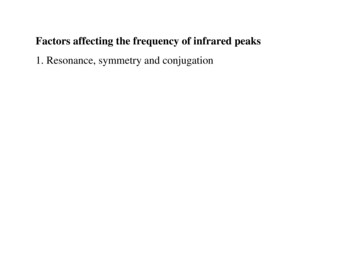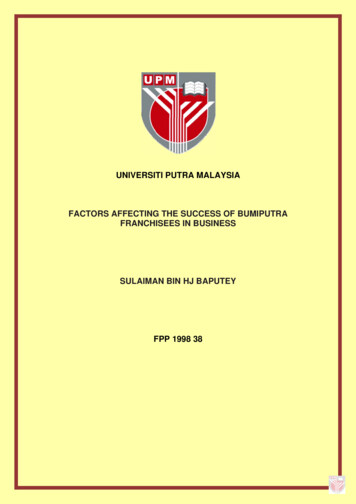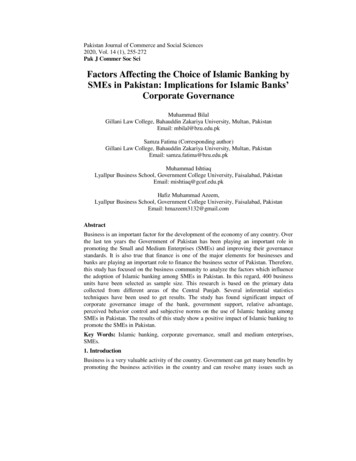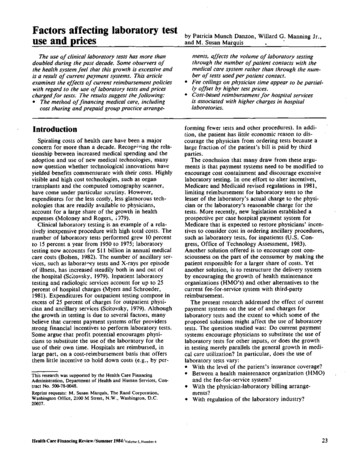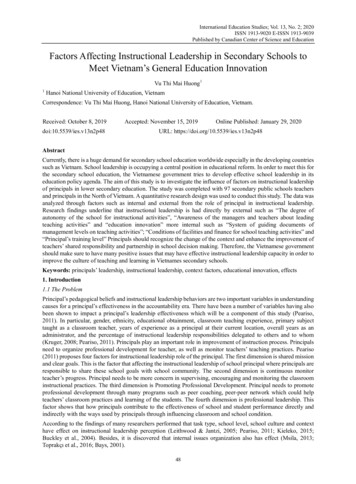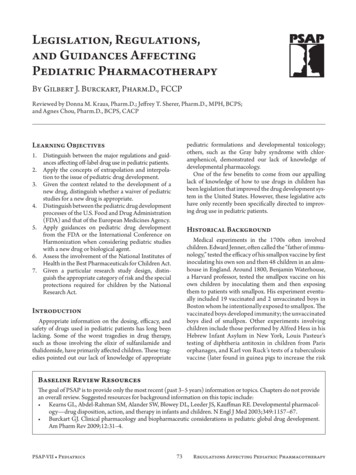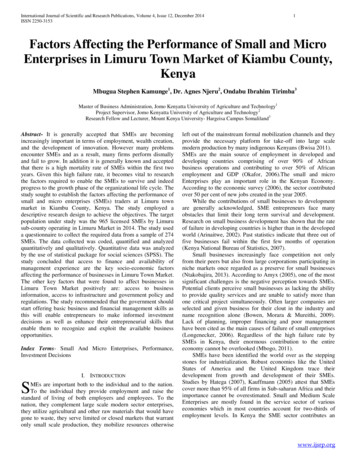
Transcription
International Journal of Scientific and Research Publications, Volume 4, Issue 12, December 2014ISSN 2250-31531Factors Affecting the Performance of Small and MicroEnterprises in Limuru Town Market of Kiambu County,KenyaMbugua Stephen Kamunge1, Dr. Agnes Njeru2, Ondabu Ibrahim Tirimba3Master of Business Administration, Jomo Kenyatta University of Agriculture and Technology1Project Supervisor, Jomo Kenyatta University of Agriculture and Technology2Research Fellow and Lecturer, Mount Kenya University- Hargeisa Campus Somaliland3Abstract- It is generally accepted that SMEs are becomingincreasingly important in terms of employment, wealth creation,and the development of innovation. However many problemsencounter SMEs and as a result, many firms perform dismallyand fail to grow. In addition it is generally known and acceptedthat there is a high mortality rate of SMEs within the first twoyears. Given this high failure rate, it becomes vital to researchthe factors required to enable the SMEs to survive and indeedprogress to the growth phase of the organizational life cycle. Thestudy sought to establish the factors affecting the performance ofsmall and micro enterprises (SMEs) traders at Limuru townmarket in Kiambu County, Kenya. The study employed adescriptive research design to achieve the objectives. The targetpopulation under study was the 965 licensed SMEs by Limurusub-county operating in Limuru Market in 2014. The study useda questionnaire to collect the required data from a sample of 274SMEs. The data collected was coded, quantified and analyzedquantitatively and qualitatively. Quantitative data was analyzedby the use of statistical package for social sciences (SPSS). Thestudy concluded that access to finance and availability ofmanagement experience are the key socio-economic factorsaffecting the performance of businesses in Limuru Town Market.The other key factors that were found to affect businesses inLimuru Town Market positively are: access to businessinformation, access to infrastructure and government policy andregulations. The study recommended that the government shouldstart offering basic business and financial management skills asthis will enable entrepreneurs to make informed investmentdecisions as well as enhance their entrepreneurial skills thatenable them to recognize and exploit the available businessopportunities.Index Terms- Small And Micro Enterprises, Performance,Investment DecisionsI. INTRODUCTIONSMEs are important both to the individual and to the nation.To the individual they provide employment and raise thestandard of living of both employers and employees. To thenation, they complement large scale modern sector enterprises,they utilize agricultural and other raw materials that would havegone to waste, they serve limited or closed markets that warrantonly small scale production, they mobilize resources otherwiseleft out of the mainstream formal mobilization channels and theyprovide the necessary platform for take-off into large scalemodern production by many indigenous Kenyans (Bwisa 2011).SMEs are the main source of employment in developed anddeveloping countries comprising of over 90% of Africanbusiness operations and contributing to over 50% of Africanemployment and GDP (Okafor, 2006).The small and microEnterprises play an important role in the Kenyan Economy.According to the economic survey (2006), the sector contributedover 50 per cent of new jobs created in the year 2005.While the contributions of small businesses to developmentare generally acknowledged, SME entrepreneurs face manyobstacles that limit their long term survival and development.Research on small business development has shown that the rateof failure in developing countries is higher than in the developedworld (Arinaitwe, 2002). Past statistics indicate that three out offive businesses fail within the first few months of operation(Kenya National Bureau of Statistics, 2007).Small businesses increasingly face competition not onlyfrom their peers but also from large corporations participating inniche markets once regarded as a preserve for small businesses(Ntakobajira, 2013). According to Amyx (2005), one of the mostsignificant challenges is the negative perception towards SMEs.Potential clients perceive small businesses as lacking the abilityto provide quality services and are unable to satisfy more thanone critical project simultaneously. Often larger companies areselected and given business for their clout in the industry andname recognition alone (Bowen, Morara & Mureithi, 2009).Lack of planning, improper financing and poor managementhave been cited as the main causes of failure of small enterprises(Longenecker, 2006). Regardless of the high failure rate bySMEs in Kenya, their enormous contribution to the entireeconomy cannot be overlooked (Mbogo, 2011).SMEs have been identified the world over as the steppingstones for industrialization. Robust economies like the UnitedStates of America and the United Kingdom trace theirdevelopment from growth and development of their SMEs.Studies by Hatega (2007), Kauffmann (2005) attest that SMEscover more than 95% of all firms in Sub-saharan Africa and theirimportance cannot be overestimated. Small and Medium ScaleEnterprises are mostly found in the service sector of variouseconomies which in most countries account for two-thirds ofemployment levels. In Kenya the SME sector contributes anwww.ijsrp.org
International Journal of Scientific and Research Publications, Volume 4, Issue 12, December 2014ISSN 2250-3153estimated 18% of the GDP as well as creating employment for80% of the workforce population (Kithae, 2012).Small and medium enterprises are widely recognized fortheir role in the social, political and economic development.Their importance is particularly apparent in its ability to providereasonably priced goods, services, income and employment to anumber of people (Kauffmann, 2006). There has therefore been agrowing concern and interest by the government anddevelopment agencies for the improved performance and growthof the small and medium enterprises.A positive relationship has been documented between smallbusiness development and economic growth in developedcountries (Harris and Gibson, 2006; Monk, 2000; Sauser, 2005).However, not much research has been conducted on thisrelationship in developing countries. Studies in small-businessdevelopment and performance are necessary in countries likeKenya because of the dissimilarities in the process betweendeveloped and developing countries (Arinaitwe, 2002). It is alsoessential to understand the factors influencing small-businessperformance in African countries because they are significantlydifferent from those facing developed countries. These factorsinclude: availability of business information, access to finance,availability of managerial experience and access to infrastructure.The First 1993 Small & Medium Enterprises (SME) baselinesurvey revealed that there were approximately 910,000 SMEsemploying up to 2 million people. The second SME baselinesurvey (1995), estimated the size of the SME sector at 708,000enterprises employing up to 1.2 million people. Compared to theother sectors of the economy, the contribution of the SME sectorto the country’s Gross Domestic Product (GDP) increased from13.8% in1993 to over 18% in 1999, (Sessional Paper No. 2 of2005). Currently, it is estimated that the contribution to the GDPby this sector stands at over 25% (Economic Survey, 2012).Despite the statistics, the Kenyan SME sector usually operates onsmall-scale, locally and at a subsistence level. They have feweremployees (especially home based enterprises), they operate fora shorter period, and have poor access to water and electricityand few sell outside the establishments where the entrepreneurslive (World Bank, 2006).Majority of the SMEs are micro enterprises with fewer than10 employees, while 70 per cent of them are one person, ownaccount workers. This means that majority of SME entrepreneursare operating at the bottom of the economy, with a significantpercentage falling among the 53 percent of Kenyans living belowthe poverty line of USD 1 per day. The latter are largely forsubsistence and engage in economically uncompetitive activitiesboth in urban and rural areas (Kihonge, 2014).At the fore front of challenges in Kenya lies the highunemployment rate among young people, which is estimated tobe double the national level of unemployment of 12.7 percent.Those young people who have a job are often engaged in lowpaying work. Hence, most of the unemployed peopledisproportionately stem from the youth segment of thepopulation and belong to the bottom 40 percent of the incomedistribution (UNDP, 2013).Several studies have been carried out focusing onperformance of entrepreneurs. Mwania, (2011), did a research onthe effect of Biashara Boresha Loan on Performance of Microand Small enterprises owned by KCB Ruiru branch customers.2Gathitu (2007) did a study on Factors affecting performance ofentrepreneurs in privately run secondary schools in Thikadistrict. Mugo, (2012), did a study on Factors affectingentrepreneurs’ performance in Kenya dwelling on Nairobiwomen groups in the Central Business District. Kinyua, (2014),did a study on factors affecting the performance of Small andMedium Enterprises in the Jua Kali Sector in Nakuru town,Kenya.Though the said studies dwelt on performance, they weredone in their specific areas and covered specific objectives.Mwania, (2011) for instance did not consider other factors thatcan affect performance apart from finance. Gathitu (2007) on theother hand was specific on the entrepreneurs investing in theeducation sector. Mugo (2012) only considered performance ofwomen entrepreneurs and left out the male entrepreneur. Kinyua(2014) did study on the informal sector in Nakuru town specificto the area. These studies have been done in urban Centres ofNairobi, Nakuru, Thika and Ruiru.Since SMEs in Limuru market employ a huge population,their positive performance can bring hope to the problem ofunemployment in Kiambu County. This study seeks to establishthe factors that influence performance of traders in Limuru townmarket of Kiambu County.The main objective was to explore the factors affectingperformance of small and micro enterprises in Limuru townmarket of Kiambu County. Specific objectives included: toestablish the influence of access to business information onperformance of small and micro enterprises in Limuru townmarket of Kiambu County, to examine the effect of access tofinance on performance of small and micro enterprises in Limurutown market of Kiambu County, to determine the effect ofavailability of managerial experience on performance of smalland micro enterprises in Limuru town market of Kiambu Countyand to determine the effect of access to infrastructure onperformance of small and micro enterprises in Limuru townmarket of Kiambu County.The study is beneficial to the following parties:I.The Central government of Kenya- for the purpose ofpolicy formulation that will create a suitableenvironment for the small and micro entrepreneur toincrease business growth and the consequent socialstandard improvement.II.County Government of Kiambu- the research will assistthe county government of Kiambu when formulatingpolicies on planning so as to assist them build holisticpolicies that will include all traders in the countyincluding small and micro entrepreneurs.III.The Kenya Revenue Authority- for the purpose oftaxation and also reaching out to this group of incomeearners who may not know that they have an obligationto pay tax as per the laws of Kenya.IV.Future researchers- the study is of much significance toresearch institutions, students and other researchers whowould get the findings useful in their investigation inthe area of study.This research was limited to the factors affectingperformance of small and micro enterprises in Limuru townwww.ijsrp.org
International Journal of Scientific and Research Publications, Volume 4, Issue 12, December 2014ISSN 2250-3153market of Kiambu County and the 965 businesses the traderscarry out therein. The study mainly depended on the dataprovided by the respondents. This means that the accuracy of thedata provided depended on the information provided. Theresearcher handled the problem by making follow-up calls toclarify any issues that were not clear.Business information is usually confidential. Most of therespondents approached were reluctant in giving information dueto fear of being victimized. The researcher handled the problemby carrying an introduction letter from the University so as toassure the respondents that the information would be treated asconfidential and would be used for academic purposes only.Further, the respondents had busy working schedules in themarket which delayed the filling of questionnaires. Theresearcher had to exercise utmost patience and make extra effortin reminding respondents and making constant follow-ups so asto acquire sufficient data from respondents. This explains whyonly 58.76% of the respondents were able to complete thequestionnaires.II. LITERATURE REVIEWThis chapter reviews existing literature on the subject of thisstudy. It outlines the literature review, the theoretical andconceptual frameworks, empirical review, research gap andsummary.2.2 Theoretical Framework2.2.1 The Balanced Scorecard (BSC)BSC suggests managers to view organization’s performancefrom four dimensions, customer perspective, internal perspective,innovation & learning perspective, financial perspective (Kaplanand Norton 1996). BSC incorporates financial and non-financialmeasures in one measurement system. The objectives andmeasures of BSC are derived from an organization’s vision andstrategy. The Balanced Scorecard provides executives with acomprehensive framework that translates a company’s vision and3strategy into a coherent set of performance measures. Accordingto Kaplan & Norton (1996) the
both in urban and rural areas (Kihonge, 2014). At the fore front of challenges in Kenya lies the high unemployment rate among young people, which is estimated to be double the national level of unemployment of 12.7 percent. Those young people who have a job are often engaged in low-paying work. Hence, most of the unemployed people
